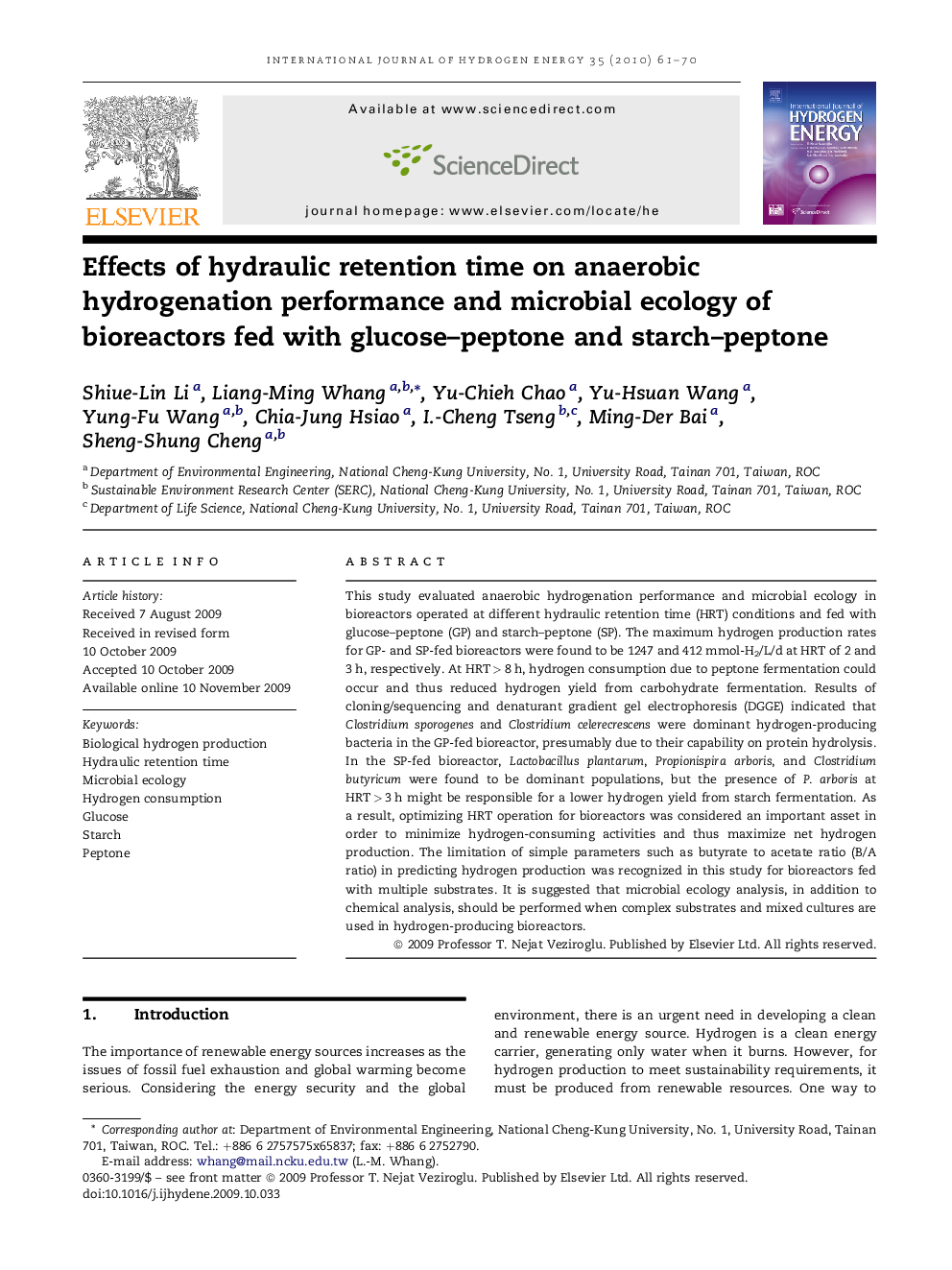| Article ID | Journal | Published Year | Pages | File Type |
|---|---|---|---|---|
| 1282964 | International Journal of Hydrogen Energy | 2010 | 10 Pages |
This study evaluated anaerobic hydrogenation performance and microbial ecology in bioreactors operated at different hydraulic retention time (HRT) conditions and fed with glucose–peptone (GP) and starch–peptone (SP). The maximum hydrogen production rates for GP- and SP-fed bioreactors were found to be 1247 and 412 mmol-H2/L/d at HRT of 2 and 3 h, respectively. At HRT > 8 h, hydrogen consumption due to peptone fermentation could occur and thus reduced hydrogen yield from carbohydrate fermentation. Results of cloning/sequencing and denaturant gradient gel electrophoresis (DGGE) indicated that Clostridium sporogenes and Clostridium celerecrescens were dominant hydrogen-producing bacteria in the GP-fed bioreactor, presumably due to their capability on protein hydrolysis. In the SP-fed bioreactor, Lactobacillus plantarum, Propionispira arboris, and Clostridium butyricum were found to be dominant populations, but the presence of P. arboris at HRT > 3 h might be responsible for a lower hydrogen yield from starch fermentation. As a result, optimizing HRT operation for bioreactors was considered an important asset in order to minimize hydrogen-consuming activities and thus maximize net hydrogen production. The limitation of simple parameters such as butyrate to acetate ratio (B/A ratio) in predicting hydrogen production was recognized in this study for bioreactors fed with multiple substrates. It is suggested that microbial ecology analysis, in addition to chemical analysis, should be performed when complex substrates and mixed cultures are used in hydrogen-producing bioreactors.
